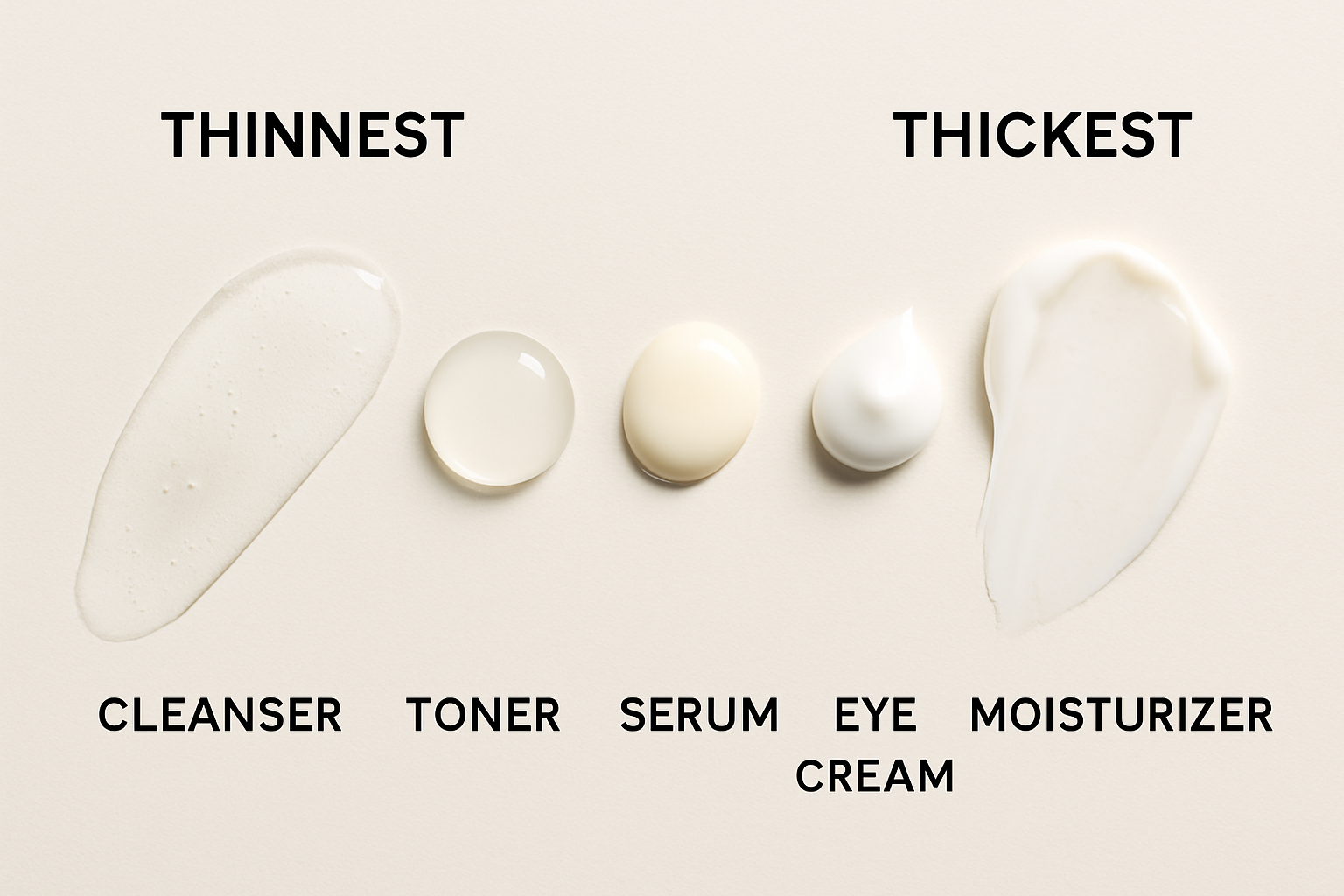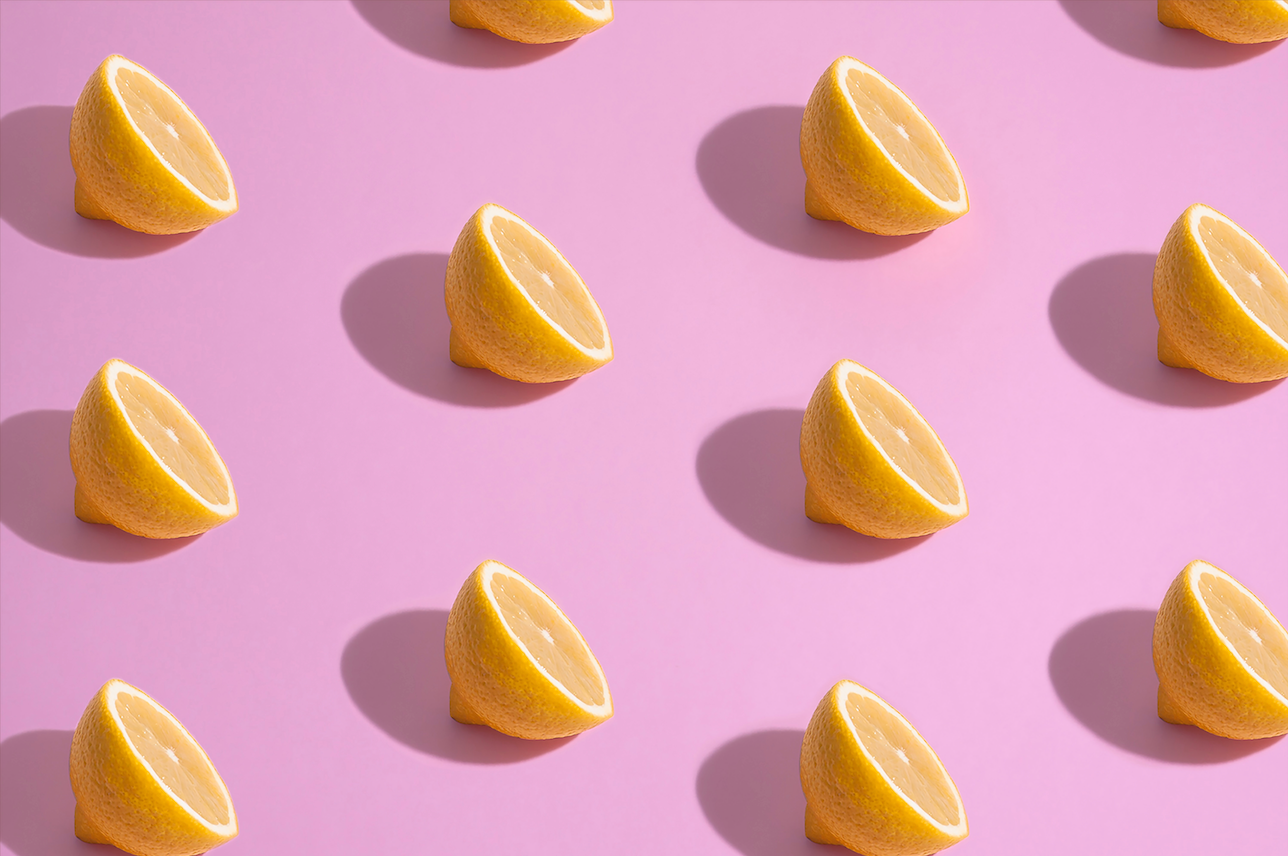
The correct order to apply your skincare
Getting the order of your skincare routine right can make the difference between glowing results and wasted products. While there isn’t one “perfect” sequence for everyone, there are a few dermatologist-approved rules that maximize absorption, minimize irritation, and keep your skin barrier healthy.
Think of it like this: after cleansing, apply products from the thinnest consistency to the thickest. That way, lightweight formulas can penetrate without being blocked by heavier creams or oils. Not every step applies to every person — keep the steps that work for you and skip the rest.
If you wear makeup (foundation, bb cream, concealer etc.)
1. Cleansing oil/cleansing balm

Oil based cleansers are great as the first step in removing makeup. Generally, a cleansing balm or cleansing oil should be sufficient at removing your makeup. You may need to use a separate eye-makeup remover if you are using heavy-duty waterproof eye makeup. Massage your cleansing oil/balm into your skin for a good minute to really breakdown the makeup, emulsify the product with water so the surfactants can lift the makeup and oil off your face effectively and rinse. Some people like using cleansing pads which are disposable one-use cotton pads soaked in a cleansing solution, however these are not environmentally friendly and the physical rubbing and tugging of the skin with these pads to remove makeup isn't great for those with sensitive skin.
2. Cleanser (cream/gel/foaming/cream-to-foam)

Now that you've removed your makeup, you'll want to go ahead and do a second cleanse with a cleanser. If you don't wear makeup, you can simply skip to this step. Cleansers come in a variety of different forms including gel cleansers, cream cleansers, milky emulsion cleansers, cleansing foams etc. You'll want to experiment with what type of cleanser you personally enjoy. For those of you with very sensitive and dry skin, you may enjoy using a cleanser that is cream based with a milky consistency. There are also some people who like using a cleansing oil as their first step because it feels more hydrating and gentle on the skin.
3. Toner/Mist/Essence

This step is optional after cleansing. Toners, mists and essences are generally used as an extra step to provide more hydration to the skin. However, most moisturizers and serums already do this so it isn't necessary. If you enjoy using them though, definitely keep using them! Sometimes toners may come in the form of exfoliating pads soaked in a solution with AHA's and/or BHA's. If you use both essences and toner pads, use the toner pad first followed by your essence or mist over it.
4. Serum/Ampoule
 Serums and ampoules are concentrated formulas that are filled with either moisturizing humectants, antioxidants, ceramides, vitamins or all of the above! These are often where you will find the highest concentration of 'actives' which are what really help benefit your skin. Serums and ampoules can range in consistency from a watery liquid, a thicker gel, a creamy/milky consistency or even a jelly-like consistency. When using multiple serums, ideally you would want to use the serum with the thinnest consistency first and follow up with serums that are thicker. Give your skincare products some time to soak in before layering the next product over it - no need to go crazy and wait forever, even giving each layer 30 seconds to a minute to soak in will make a difference.
Serums and ampoules are concentrated formulas that are filled with either moisturizing humectants, antioxidants, ceramides, vitamins or all of the above! These are often where you will find the highest concentration of 'actives' which are what really help benefit your skin. Serums and ampoules can range in consistency from a watery liquid, a thicker gel, a creamy/milky consistency or even a jelly-like consistency. When using multiple serums, ideally you would want to use the serum with the thinnest consistency first and follow up with serums that are thicker. Give your skincare products some time to soak in before layering the next product over it - no need to go crazy and wait forever, even giving each layer 30 seconds to a minute to soak in will make a difference.
5. Moisturizer

Moisturizers contain humectants and occlusives that seal in the moisture and hydration. They come in a range of consistencies and textures - cream, gels, gel-creams and balms. Moisturizers will tend to be the heaviest or have the thickest consistency of all your skincare products so it is best to apply it as the last (essential) step.
6. Oil

Similarly to toners, oils are nice to have but generally not a necessary part of your skincare routine. Oils act as occlusives to seal in the moisture from your previous hydrating products, but moisturizers also contain occlusives so they pretty much do the same thing. Some people have particular oils that they just love and cannot live without, so if thats the case - you do you, boo!
7. Sunscreen

Without a doubt the most important step of your skincare routine. It isn't necessary to put sunscreen on at night when there is no sun, but it is an absolute must to apply sunscreen in the morning. Even if you're just at home or at the office the whole day, UVA rays can penetrate through glass and still cause damage to your skin. Sunscreen should be the last step of your "skincare" routine and before your makeup routine. So apply your foundation, concealer and face makeup after your sunscreen. Remember to use a generous amount of sunscreen for your face, neck, ears and any part of your skin that will be exposed to the sun. The general rule is to reapply sunscreen after two hours however if you're not excessively sweating or wiping away the sunscreen off your skin, it isn't the end of the world if you don't. There are also products like spray on sunscreens and sunscreen powders that you can reapply over your makeup for added SPF protection throughout the day.
Bonus/Speciality treatment skincare products
Some skincare products are only used a few times a week or are considered a "specialty treatment" product because of the particular actives in it. Not everyone will use these but if you do, here is where you will want to use them:
1. Vitamin A creams/gels

These come in a variety of forms such as Retinol/Tretinoin/Adapalene and work by speeding up skin cell turnover. These are great to use for anti-aging as well as acne. For products like retinol/Retin-A, it is advised to use it on dry skin (not damp or wet) to minimize potential irritation. So use these products after cleansing and toning but make sure your skin is fully dry before applying. Alternatively, many people like to use a retinol on top of their moisturizer to minimize irritation.
2. Physical exfoliators (scrubs) and chemical exfoliants

Use an exfoliator after your cleanser step and before your optional toner step.
3. Wash off masks (Clay, gel or cream masks)

Wash off masks are often used in the form of clay masks which are used to draw out impurities and clarify the skin or as hydrating and nourishing wash off masks that are cream or gel based. Use these masks after your cleanser step.
4. Overnight/sleeping masks

Sleeping masks are another lavish and luxurious step to have in your skincare routine but not completely necessary. Sleeping masks basically act as moisturizers and should be the last step of your night time skincare routine. You can use this on top of your moisturizer or simply used in place of a moisturizer.
5. Acne spot treatments

Acne spot treatments are a tricky one and it really depends on the specific formula. For a benzoyl peroxide spot treatment, I personally prefer using it over my moisturizer to minimize excessive dryness and irritation. Some people prefer using a benzoyl peroxide treatment after cleansing, toning and serums but before their moisturizer. For acne spot treatments that are more serum based and contain ingredients like salicylic acid, I would suggest using this first before your moisturizer.
6. Eye creams

Eye creams are another product that isn't necessary to have in your skincare routine, but if you enjoy using one then go ahead and keep using it. Eye creams should be used after your toners and serums but before your moisturizer.
Quick Rule of Thumb
-
Lightest to heaviest: Cleanser → Water-like products → Serums → Creams → Oils → SPF (AM only)
-
Don’t overcomplicate. A solid 3-step routine (Cleanser → Moisturizer → Sunscreen) is better than an overloaded one.
-
Introduce new actives slowly — one at a time.

There’s no one-size-fits-all routine. The correct order is about layering in a way that lets each product do its job while keeping your skin barrier happy. Start with the essentials: cleanse, moisturize, and protect and then add serums, treatments, or extras if your skin needs them.
At Smood Beauty, our philosophy is gentle, effective, and fun. Build a routine that feels good for your skin, and don’t be afraid to simplify when needed.



Leave a comment
This site is protected by hCaptcha and the hCaptcha Privacy Policy and Terms of Service apply.